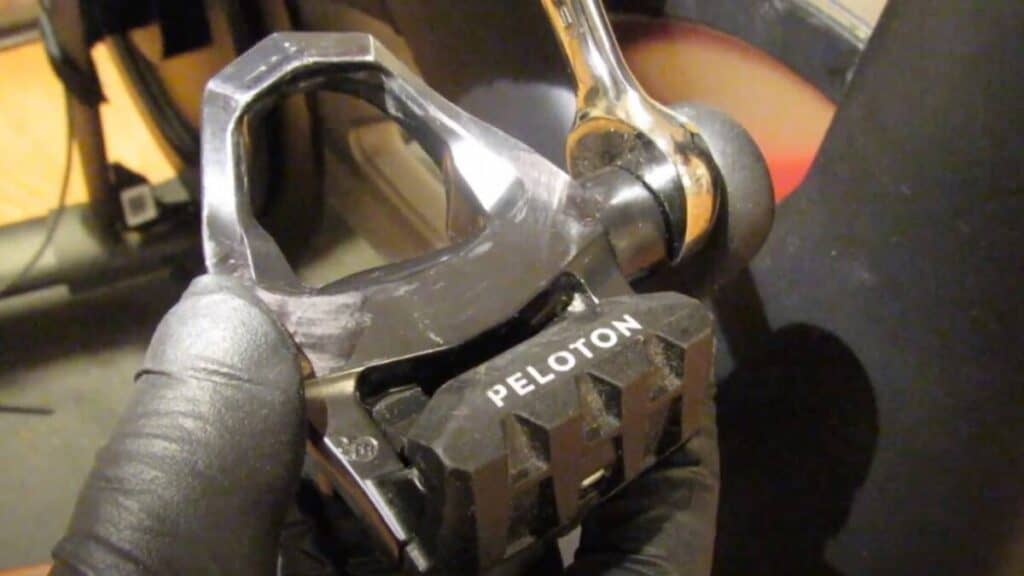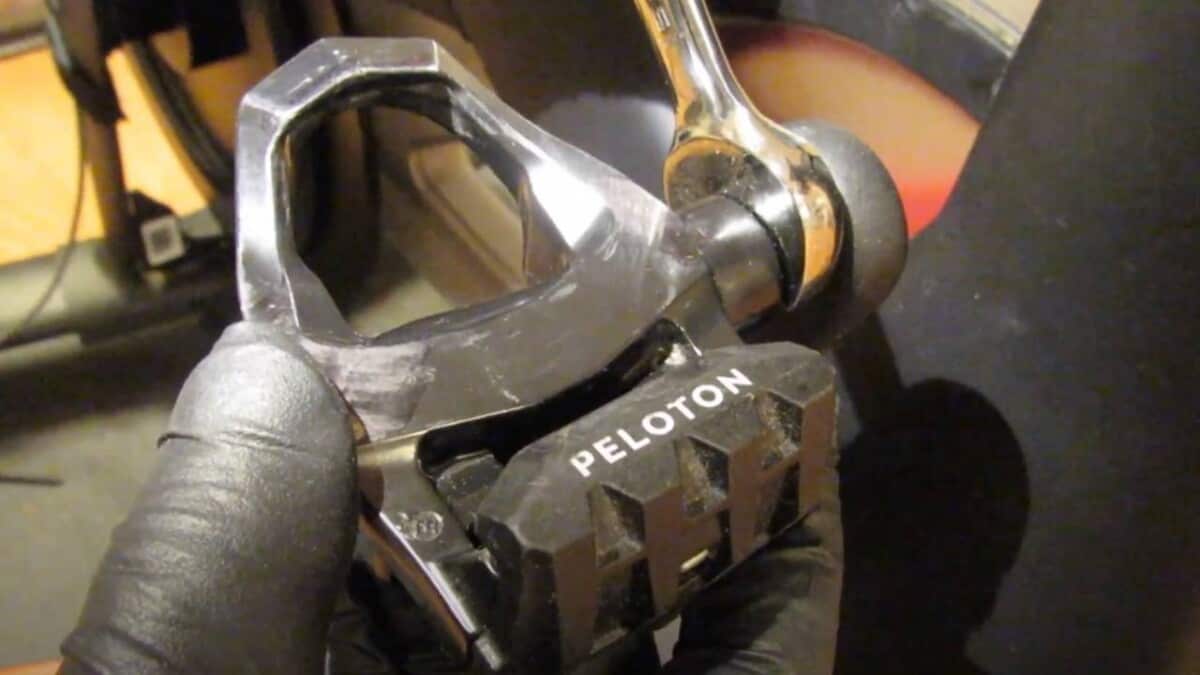Peloton bikes come equipped with pedals, which are an essential component of the bike. Pedals allow users to clip in and out of the bike, providing stability and allowing for a more efficient workout. However, like any other component of a bike, pedals can wear out over time and need to be replaced.
Table of Contents
How Often Should You Change Peloton Pedals?
Peloton pedals should be replaced annually or after 1,000 hours of use. This recommendation is based on the length of the warranty that comes with the Peloton bike. However, some users may find that they need to replace their pedals more frequently, depending on how often they use the bike and how well they take care of their equipment.
Replacing Peloton pedals is a simple process that can be done at home. Peloton sells replacement pedals on their website, and users can follow the instructions provided to replace their pedals.
Additionally, users may choose to replace their Peloton pedals with pedals from other manufacturers, such as Shimano SPD-SLs. Ultimately, the frequency of pedal replacement will depend on a variety of factors, but it is important to keep pedals in good condition to ensure a safe and effective workout.
When to Replace Peloton Pedals

Peloton pedals are an essential component of the Peloton bike. They are responsible for transferring power from the rider’s legs to the bike’s flywheel. Over time, pedals experience wear and tear, rust, and corrosion, which can lead to failure and even injury. Therefore, it’s essential to replace them regularly.
1. Wear and Tear of Peloton Pedals
One of the most common reasons for replacing Peloton pedals is wear and tear. The pedals are constantly subjected to pressure, friction, and impact, which can cause them to weaken and break.
According to Peloton, pedals should be replaced after one year, which is the length of the warranty. However, the frequency of replacement may vary depending on how often the bike is used and how well the pedals are maintained.
Some riders may need to replace their pedals more frequently than others. For example, riders who use the bike every day or who ride with high resistance levels may experience more wear and tear on their pedals.
It’s important to inspect the pedals regularly for signs of wear, such as cracks, chips, or loose bearings. If any of these signs are present, it’s time to replace the pedals.
2. Rust and Corrosion of Peloton Pedals
Rust and corrosion are other reasons why Peloton pedals need to be replaced. These issues can arise due to exposure to moisture, sweat, and other environmental factors.
Rust can cause the pedals to become stiff, making it difficult to clip in or out of the pedals. Corrosion can cause the pedals to become loose or unstable, which can be dangerous during a ride.
To prevent rust and corrosion, it’s essential to keep the pedals dry and clean. After each ride, wipe down the pedals with a dry cloth to remove any sweat or moisture. If the bike is stored in a damp or humid environment, consider using a dehumidifier or storing the bike in a dry place.
In conclusion, Peloton pedals should be replaced regularly to ensure a safe and comfortable ride. Riders should inspect their pedals for signs of wear and tear and rust and corrosion and replace them as needed. By taking care of their pedals, riders can enjoy a smooth and reliable ride on their Peloton bike.
Why Replace Peloton Pedals?
Pedals on any stationary bike should be replaced regularly to avoid failures that can result from wear and tear. Peloton recommends replacing your pedals annually to ensure the best and safest riding experience.
Over time, pedals can become worn, making it difficult to clip in and out of the bike. This can lead to an unsafe riding experience, as the rider may not be able to properly engage or disengage from the pedals.
Additionally, worn pedals can cause uneven pressure on the rider’s feet, leading to discomfort or even injury.
Replacing your pedals also ensures that the bike remains under warranty. Peloton’s warranty covers the bike’s frame, touchscreen, and other components, but only if the bike is used and maintained according to Peloton’s guidelines.
By replacing your pedals annually, you can help ensure that your bike remains in top condition and under warranty.
Finally, replacing your pedals can also improve your overall riding experience. Peloton offers a variety of pedal options, including toe cages, Look Delta, and SPD pedals.
By choosing the pedal that best suits your needs and preferences, you can customize your ride and get the most out of your Peloton experience.
How to Replace Peloton Pedals
Tools Required to Replace Your Peloton Pedals
Before replacing Peloton pedals, there are a few tools that are required:
Step-by-Step Guide
Here is a step-by-step guide on how to replace Peloton pedals:
- Turn off the Peloton bike and unplug it from the wall outlet.
- Use the 15mm pedal wrench to loosen the pedal on the left side of the bike by turning it counterclockwise.
- Once the pedal is loose, unscrew it by hand and remove it from the bike.
- Apply a small amount of grease to the threads of the new pedal.
- Thread the new pedal onto the left side of the bike by turning it clockwise. Tighten the pedal with the 15mm pedal wrench by turning it clockwise.
- Repeat steps 2-5 for the right side of the bike.
- Plug the Peloton bike back into the wall outlet and turn it on.
It is recommended to replace Peloton pedals annually to avoid failures that can result from wear and tear. New pedals can be purchased on Peloton’s website or through Member Support.
6 Best Pedals for Peloton Bikes
As avid Peloton riders ourselves, we know that having the right pedals can make all the difference in your workout. That’s why we’ve put together a list of the best pedals for Peloton bikes. Whether you’re looking for improved performance, comfort, or durability, we’ve got you covered. Read on to find the perfect pedals for your Peloton bike.
How Often to Replace Peloton Pedals
Replacing pedals on a Peloton bike is an essential part of regular maintenance to ensure the bike’s optimal performance and safety. Although there is no one definitive answer to how often you should replace Peloton pedals, it is recommended that you replace them at least once a year.
The manufacturer, Peloton, recommends replacing pedals after one year, the length of the warranty. However, some riders may need to replace them more frequently, depending on their usage and care. It is important to inspect the pedals regularly and replace them if they show signs of wear and tear or damage.
Replacing pedals on a Peloton bike is a simple process that can be done at home with the right tools and instructions. Peloton provides detailed instructions on how to replace the pedals on their website, and new pedals are available for purchase on their site as well.
Ultimately, how often you should replace Peloton pedals depends on your usage, care, and personal preference. It is important to inspect the pedals regularly and replace them when necessary to ensure the best riding experience and safety on your Peloton bike.



